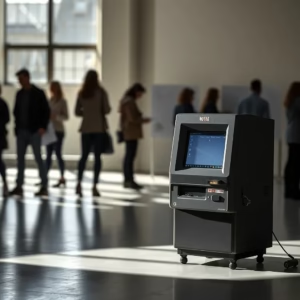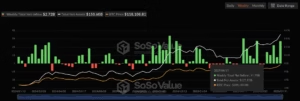In a significant shift from previous regulatory approaches, Securities and Exchange Commission (SEC) Chairman Paul Atkins emphasized at the Commission’s roundtable on May 12 that blockchain technology holds immense potential for transforming market activities. He stated that blockchain could facilitate “a broad swath of novel use cases for securities,” suggesting that current regulations may not fully embrace these innovations.
Atkins declared, “A new day at the SEC” has emerged, where policymaking will no longer rely solely on enforcement actions. Instead, the SEC plans to harness its rulemaking and interpretive authorities to establish practical standards for market participants. This proactive approach is intended to create a rational regulatory framework that defines clear rules governing the issuance, custody, and trading of crypto assets, while also working to deter bad actors from engaging in illicit activities.
The focus will be on developing “clear and sensible guidelines” for identifying which crypto assets can be classified as securities. Additionally, Atkins expressed the need to expand the range of investment products available for brokers, which may include both securities and non-securities. This pivot contrasts sharply with the tenure of former SEC Chair Gary Gensler, who was criticized for his aggressive enforcement-driven stance on regulations.
Atkins compared the evolution of securities tokenization to advancements in audio formats, tracking the journey from vinyl records to streaming services. He highlighted how each shift enabled better compatibility and accessibility, ultimately benefiting consumers and spurring growth in the economy. As tokenization of securities garners more attention, firms like BlackRock and Franklin Templeton have already ventured into this territory with their respective tokenized US treasury funds. Moreover, Robinhood is exploring options to develop blockchain technology that will enable European retail investors to trade tokenized US securities more efficiently.
Investors and financial firms are increasingly drawn to tokenized securities due to their advantages, including quicker settlement times, reduced dependency on traditional financial systems, and enhanced accessibility. This innovation may unlock liquidity for asset classes that have traditionally been difficult to trade, fostering a more dynamic market environment.
As of recent reports, approximately $22.6 billion in real-world assets have transitioned to blockchain, reflecting a 7.6% growth within the past month. Additionally, the stablecoin market poses another area of interest, with a total market capitalization of around $243 billion, highlighting the robust integration of digital assets with traditional funding mechanisms. Tether’s USDt, for instance, commands a capitalization of $150.6 billion, illustrating the increasing trust and reliance on such digital currencies.
In this transformative landscape, the SEC’s commitment to establishing clear and well-defined regulatory guidelines for crypto assets signifies a remarkable evolution in the intersection of traditional finance and digital innovation. Stakeholders eagerly anticipate the practical implications of these forthcoming rules as they navigate this new era of financial technology.







